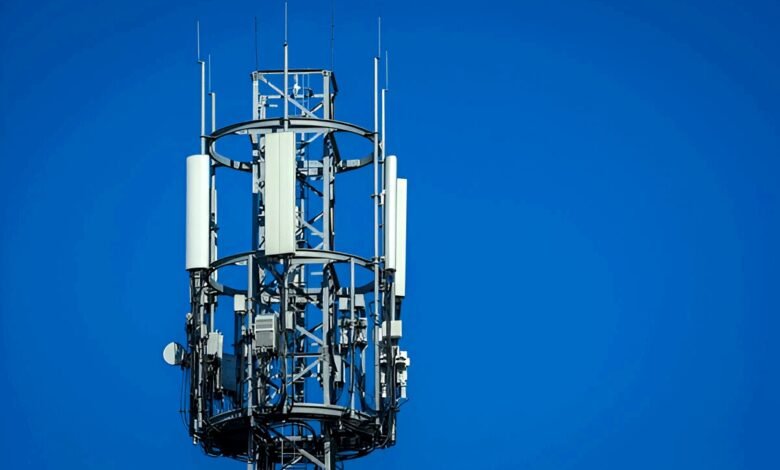UK Telecom Innovations to Expect in the Coming Year
This article explores in detail the most groundbreaking innovations that are set to make a mark in the UK telecom industry.

The telecom sector in the UK is undergoing a significant evolution. Technological advancements and the ever-growing demand for high-speed, seamless connectivity are pushing telecom providers to innovate like never before. In the coming year, a series of transformative UK telecom innovations are poised to reshape how individuals, businesses, and governments communicate and operate. From ultra-fast 5G enhancements to sustainable infrastructure developments, the landscape is changing rapidly. This article explores in detail the most groundbreaking innovations that are set to make a mark in the UK telecom industry.
1. Nationwide 5G Expansion and Enhancement
The deployment of 5G across the United Kingdom is not just about speed; it represents a foundational shift in mobile connectivity. As telecom companies like BT, Vodafone, and Three continue expanding their 5G networks, the focus in 2025 will be on reaching underserved rural areas and enhancing the quality of service in densely populated cities. This includes deploying small cell networks and leveraging spectrum more efficiently.
The enhanced 5G network will significantly reduce latency, improve network reliability, and support applications that demand high bandwidth, such as autonomous vehicles, remote surgery, and immersive augmented reality experiences. The increased capacity will also enable thousands of devices to operate simultaneously, crucial for smart city infrastructure and IoT growth.
2. Full Fibre Broadband Acceleration
While 5G garners much of the spotlight, full fiber broadband is quietly becoming the backbone of the UK’s digital infrastructure. Traditional copper lines are being phased out in favor of fiber-optic cables that offer symmetrical gigabit speeds. Government initiatives and investments from private telecom companies aim to reach millions of premises in the coming year.
This shift enables smoother video conferencing, quicker file transfers, and more robust cloud-based services for businesses and households alike. The fiber infrastructure also plays a supporting role for mobile networks, as it is essential for backhauling data from mobile towers to core networks.
3. AI and Automation in Customer Service
Artificial intelligence is transforming customer service within the telecom industry. Gone are the days of long hold times and inconsistent support. In the coming year, AI-driven chatbots and virtual assistants will become more intelligent, offering quick, accurate responses to customer queries.
These AI systems utilize natural language processing and machine learning to understand context and intent, improving with each interaction. They can predict issues before they arise, guide users through troubleshooting steps, and escalate complex problems to human agents when necessary. This not only enhances customer satisfaction but also allows telecom providers to reduce operational costs.
4. Private 5G Networks for Enterprises
Enterprises in industries such as manufacturing, logistics, and healthcare are beginning to adopt private 5G networks to meet their unique operational needs. These networks offer the reliability and security of traditional wired networks with the flexibility of wireless connectivity.
Private 5G enables businesses to create bespoke network configurations that support real-time data analytics, robotic automation, and seamless IoT device integration. This innovation is particularly valuable for companies operating in mission-critical environments where network downtime is not an option.
5. Sustainability-Driven Innovations
The environmental impact of telecom infrastructure is a growing concern, and sustainability has become a key focus for UK telecom providers. Innovations in energy-efficient network hardware, solar-powered base stations, and biodegradable SIM cards are gaining traction.
Telecom companies are also reevaluating their supply chains and packaging methods to reduce carbon emissions. These green initiatives not only align with the UK’s Net Zero goals but also resonate with increasingly eco-conscious consumers. By embracing sustainable technologies, telecom providers can differentiate themselves in a competitive market.
6. Satellite Internet Integration
The integration of satellite internet into mainstream telecom offerings is expected to accelerate. Providers are collaborating with satellite companies such as Starlink and OneWeb to bring high-speed internet to remote and hard-to-reach locations across the UK.
Unlike traditional satellites, low Earth orbit (LEO) satellites offer lower latency and higher bandwidth, making them more suitable for real-time applications. This innovation holds promise for improving digital inclusion, especially in rural communities where traditional infrastructure is challenging to deploy.
7. Enhanced Cybersecurity Measures
As digital infrastructure becomes more sophisticated, so do the threats it faces. UK telecom providers are bolstering their cybersecurity strategies to safeguard user data and ensure service continuity. Advanced threat detection systems that use AI to identify anomalies in real-time are being adopted.
Biometric authentication, multi-factor verification, and end-to-end encryption are becoming standard across telecom services. These security enhancements are crucial not only for protecting consumer data but also for maintaining trust in increasingly complex digital ecosystems.
8. Integration of Edge Computing
Edge computing is emerging as a vital component of telecom innovation in the UK. By processing data closer to its source, edge computing reduces latency and alleviates pressure on central servers. This is particularly important for time-sensitive applications such as traffic control systems, augmented reality, and connected vehicles.
Telecom providers are investing in localized data centers and edge nodes to support these technologies. The ability to analyze data in real time at the edge will enable faster decision-making and improved user experiences across a wide array of services.
9. IoT-Driven Smart Infrastructure
The integration of Internet of Things (IoT) technology with telecom infrastructure is transforming urban landscapes. Smart traffic lights, connected public transport, and intelligent waste management systems are just a few examples of how IoT is reshaping cities.
UK telecom providers are playing a pivotal role in facilitating this transformation by providing the connectivity and data-handling capabilities necessary for IoT ecosystems. These smart systems contribute to more efficient city management, enhanced public safety, and reduced environmental impact.
10. Expansion of Open RAN Architecture
Open Radio Access Network (Open RAN) architecture is disrupting traditional telecom hardware models. By separating hardware and software components, Open RAN allows operators to use equipment from multiple vendors, increasing flexibility and reducing costs.
This approach fosters innovation by breaking down vendor lock-in and enabling faster deployment of new network features. In the coming year, Open RAN is expected to gain momentum in the UK, particularly as telecom companies seek cost-effective solutions to scale their networks and enhance performance.
Conclusion
As we move further into 2025, the UK telecom sector is poised for a wave of transformative changes. These UK telecom innovations will redefine connectivity, efficiency, and sustainability across industries and communities. From intelligent automation and fiber broadband to cutting-edge cybersecurity and green technologies, the telecom landscape is evolving rapidly. Staying informed and adaptable is essential for stakeholders looking to thrive in this dynamic environment.







